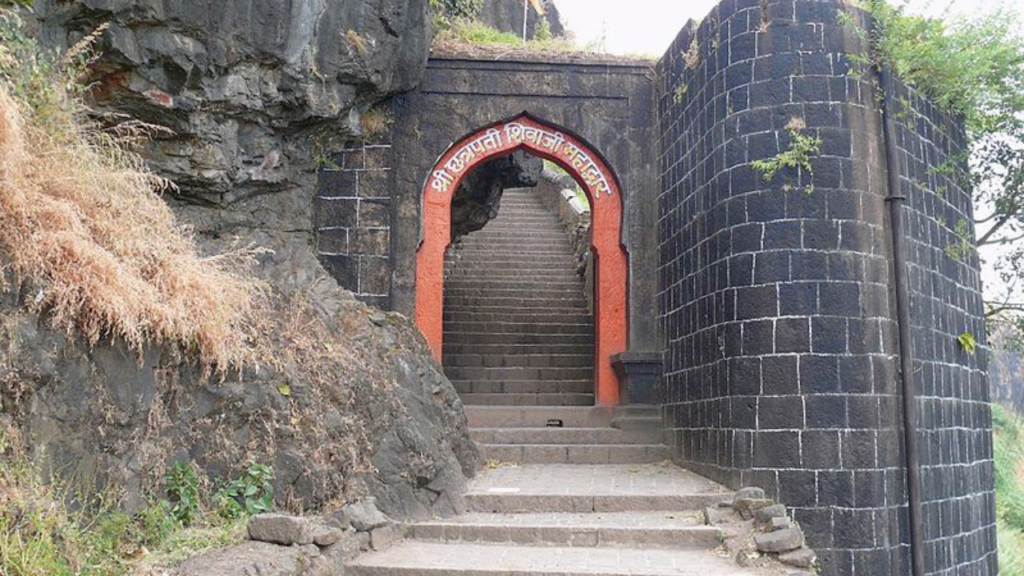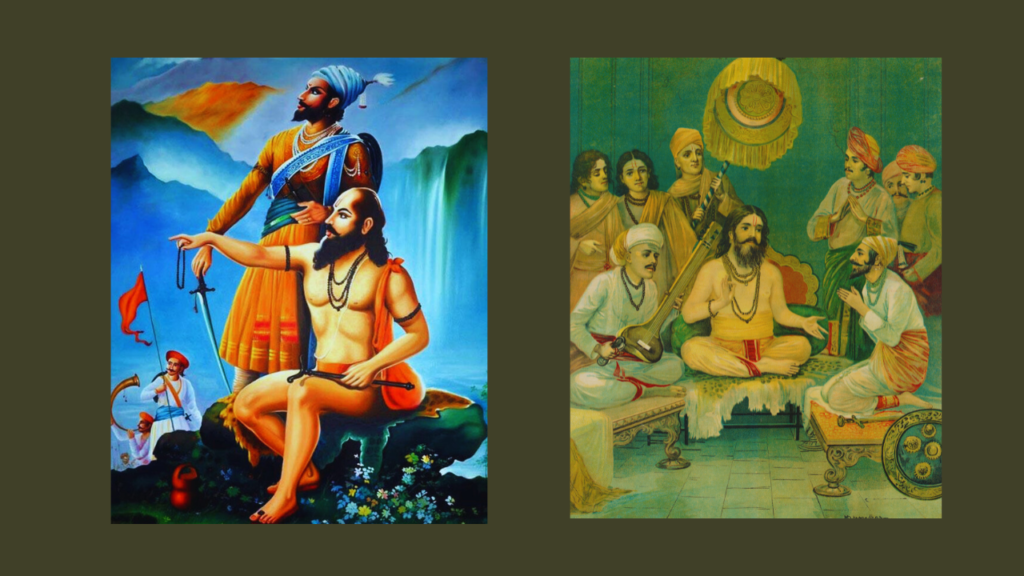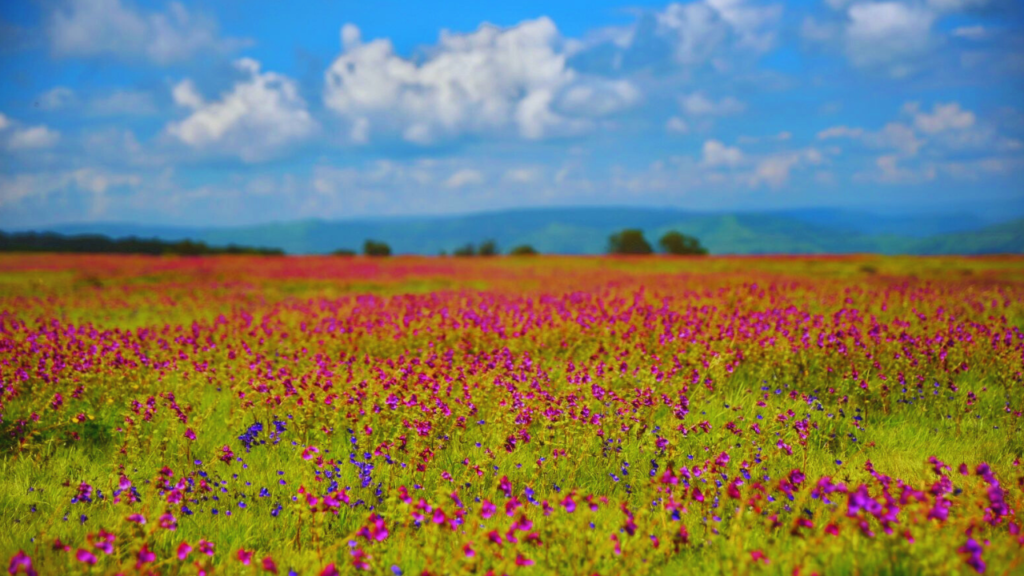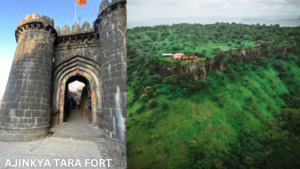Introduction: Unveiling the Beauty of Sajjangad Fort and its Historical Significance
When looking out at the stunning landscapes of Maharashtra, Sajjangad Fort is one of the many historical sites that dot the region. Located in the midst of Kas Pathar, this imposing fortress is an undeniable testament to the glorious history and architectural mastery of the Maratha empire. Known also as “Ramacha gad”, this mighty fort sits atop a hill in the Satara district, and was constructed during the 17th century. Perched high above the region, Sajjangad served as an insurmountable stronghold for various dynasties that ruled Maharashtra, and proved instrumental in shoring up territorial vigilance by shielding the area from deadly waves of invasion.

The breathtaking panoramic views of the surrounding landscape will captivate you, when visiting Sajjangad Fort. Lush greenery, cascading waterfalls and the enchanting beauty of the Kas Pathar area, are at its best, especially during monsoon when it’s covered in a vibrant carpet of blossoming flowers.
Beyond its stunning natural beauty and spiritual allure, Sajjangad Fort holds immense significance for followers of Indian saint Samarth Ramdas Swami. He resided here and imparted his valauble teachings. It’s where devotees flocked to him and do now come in remembrance, coming to pray, and seek spiritual peace.
By going through the fort’s crumbling walls you’ll learn about the rich history of Maharashtra, and be blown away by its impressive architecture. Its intricate carvings, well-preserved structures, give a glimpse of its past glory and if you’re into history, you’ll love Sajjangad Fort.
Coming hurrying to Sajjangad Fort, will be a journey you’ll never forget.
How to Reach Sajjangad Fort from Kas Pathar?
Option 1
The 40 kilometre journey is sure to be an adventure, with the breathtaking views and a wealth of regional history awaiting you, when heading to Sajjangad Fort from Kas Pathar.
Coming from Kas Pathar, hiring a taxi or a private car is probably the best option as it gives you the flexibility to determine your own itinerary and make stops along the way.
If you’re a fan of public transport, you can take a bus from Kas Pathar to Satara, the closest city to Sajjangad Fort. Once in Satara, you can hire a local taxi or auto-rickshaw to get you to the fort, but check the bus schedules in advance to plan your trip.
Option 2:
A trek from Kas Pathar to Sajjangad Fort is a top-notch choice, giving you the opportunity to traverse breathtaking landscapes and get close to the elements, when you’re looking for an adventurous and natural experience.
Descending from Kas Pathar mountain to Vadgaon or Saili village, then heading up to the fort, you’ll have a challenging and exhilarating experience. To do so, you’ll need to arrive well-equipped with hiking gear and a reliable navigation system.
To get the best route on the day of your trip you can count on a good navigation app, or simply ask for advice to someone who is very familiar with the area.
They can tell you which is the shortest, most efficient route, and any road closures you need to be aware of.
Overall, the trip to Sajjangad Fort can be an utterly delightful experience if you find the perfect blend of public, private or your own two feet.
The Rich History of Sajjangad Fort: Tales of Spiritual and Political Importance
Looking at the Sajjangad Fort you’ll see that it’s a site of great spiritual significance, and that’s thanks to Samarth Ramdas Swami, a highly respected spiritual leader and advisor to Shivaji Maharaj.
Coming in the 17th century, Samarth Ramdas Swami, also known as Sant Ramdas or Swami Ramdas, made Sajjangad Fort his home. He was instrumental in changing the way the society and politics in Maharashtra were perceived, through his teachings and wise counsel, and because of his connection to this fort, it has become a place of holy pilgrimage for many who seek enlightenment.

Reflecting on Sajjangad Fort one can’t help but notice its dual significance in the realms of spirituality and politics, and for the legendary Maratha warrior king, Shivaji Maharaj, it was practically a second home. Coming rushing off the heels of his battles, Shivaji Maharaj would often seek the advice of Samarth Ramdas Swami in matters of governance and strategy and the fort proved to be the operational hub of his military campaigns in the area.
Well-known as a stronghold that has played a pivotal role in the historical landscape of Maharashtra, Sajjangad Fort has witnessed several events that redefined the history of the state.
Today the fort stands out in its elegance and is a go-to destination for tourists, drawn to its beautiful surroundings and the rich, and captivating history it continues to portray.
Exploring the Architectural Marvels within Sajjangad Fort
Looking at the Sajjangad Fort you’re seeing the epitome of architectural brilliance in the region, and a testament to the area’s rich history and cultural heritage.
Coming from the outside, the fortress’s strong walls, imposing gateways, and cleverly designed layout are a sight to behold.
Built to withstand enemy attacks, and have done so in the past.
The magnificent temple complexes within the fort are not just religiously significant, they show the finest craftsmanship in the area.
Sajjangad Fort has also meditation halls that provide serene and peaceful escapes, for those in search of a spiritual or a soothing refuge.
One of the highpoints of Sajjangad Fort are its panoramic viewpoints, located on a hilltop.
Nature’s Bounty: Enjoying the Scenic Surroundings of Sajjangad Fort and Kas Pathar
Looking at the vast landscape near Sajjangad Fort, you’ll notice the Kas Pathar, or Valley of Flowers. This plateau has a tendency to change its looks with the seasons, and at its peak in spring, it is absolutely breathtaking. Blanketed with wildflowers and orchids that create an unforgettable sight.

Kas Pathar is at its best, transforming into a lush green paradise and boosting its charm with its stunning waterfalls, when monsoon rains set in.
Both Sajjangad Fort and Kas Pathar provide a chance to get in touch with the beautiful side of nature.
Conclusion: Visit Sajjangad Fort for a Unique Blend of History and Natural Splendour Near Kas Pathar!
You’ll find something to satisfy your interests, no matter if you’re a history buff, seeking a tranquil escape, or a nature lover, when visiting Sajjangad Fort. The fort is a popular destination for newlyweds in the area, who come to pray for a harmonious and joyful life.
Website link-
9 Top Places to Visit Near Kas Pathar Kaas Plateau
Face page link-https://www.facebook.com/profile.php?id=100064571054785&mibextid=ZbWKwL
Read this-
Which place is Sajjangad?
Sajjangad (Marathi: सज्जनगड), meaning “Fort of Good People”, is located near the city of Satara, India
Which station is near Sajjangad?
The nearest Railway Station is the Satara Railway Station – 21.7 KM.
How many steps are there in Sajjangad?
A few years ago, tourists had to climb 750 steps from the base of Parli village to reach the fort. Today you can drive up the 185 steps to the entrance
What is the time to visit Sajjangad?
The fort is open to visitors from 5:00 am to 9:00 pm. The prayers begin early in the morning, followed by Abhishek and puja. There are also manuscript readings of Maha Naivedya, Bhajans, and Sant Ramdas in the evening.




